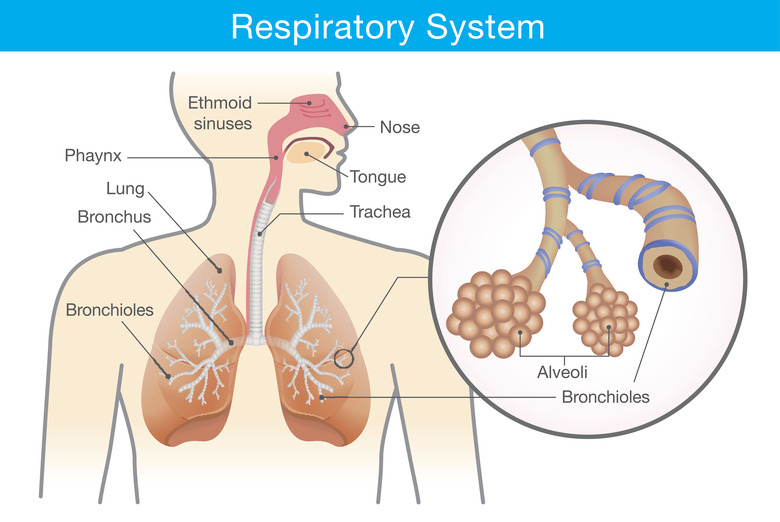How The Human Respiratory System Works
Respiration is the process by which organisms exchange gases, such as oxygen and carbon dioxide, with their external environments for the purpose of maintaining biochemical reactions essential for life. Simple organisms do not require complex specialized organs to carry out respiration; in insects, for example, gas exchange occurs using tracheae, but no lungs; aquatic animals, meanwhile, possess gills. The human respiratory system includes two highly specialized lungs, two bronchial tubes, a trachea, a larynx, and nostrils and a mouth, all of which serve the process of moving gases into and outside the body with maximal efficiency.
The Lungs
The Lungs
These organs, which are really just ingrowths of the body's exterior, are what most people probably think of first when the subject of the human respiratory system arises. Lung breathing began some 400 million years ago and is limited to vertebrate animals and a few snails. In humans, they are connected to the head by tubes that grow increasingly smaller from top to bottom. Although the left lung has three lobes and the right only two, right lung function and left lung function are the same. See the Resources for a lung diagram.
The Upper Respiratory System
The Upper Respiratory System
The path of air between the outside world and the trachea includes a number of structures more specialized than they perhaps appear. Your nose with its mucus lining acts as a filter for air you breathe in, and it also warms air (if needed) as it enters the body during breathing. Air then passes through the pharynx and the larynx, which contains the elegantly formed vocal cords, before entering the trachea.
If air could just pass into the lungs without being minimally processed, many more potentially harmful and lethal bacteria would wind up in the lungs and the bloodstream, rather than being trapped my mucus, cilia and other small but vital components of the upper respiratory system.
Gas Exchange at the Cellular Level
Gas Exchange at the Cellular Level
It is in tiny sacs in the lungs called alveoli that the business of gas exchange occurs. Via a process called diffusion, blood flowing through capillaries in the lungs from the right side of the heart receives oxygen from inhaled air on the other side of the very thin alveolar-capillary membrane. At the same time, carbon dioxide from the same blood diffuses in the other direction, into the alveoli, where it is ultimately expired (breathed out). The movement of these gases in this way is almost instantaneous.
Ventilation Versus Respiration
Ventilation Versus Respiration
Ventilation is related to respiration, but they are not the same. Respiration refers to gas exchange specifically, but discussions of respiration necessarily focus on large organ and tissue systems. Ventilation is the mechanical breathing process that allows respiration to happen. Ventilation primarily relies on the diaphragm below the lungs and also involves intercostal muscles between the ribs.
Cite This Article
MLA
Beck, Kevin. "How The Human Respiratory System Works" sciencing.com, https://www.sciencing.com/human-respiratory-system-works-5387071/. 20 July 2018.
APA
Beck, Kevin. (2018, July 20). How The Human Respiratory System Works. sciencing.com. Retrieved from https://www.sciencing.com/human-respiratory-system-works-5387071/
Chicago
Beck, Kevin. How The Human Respiratory System Works last modified August 30, 2022. https://www.sciencing.com/human-respiratory-system-works-5387071/
